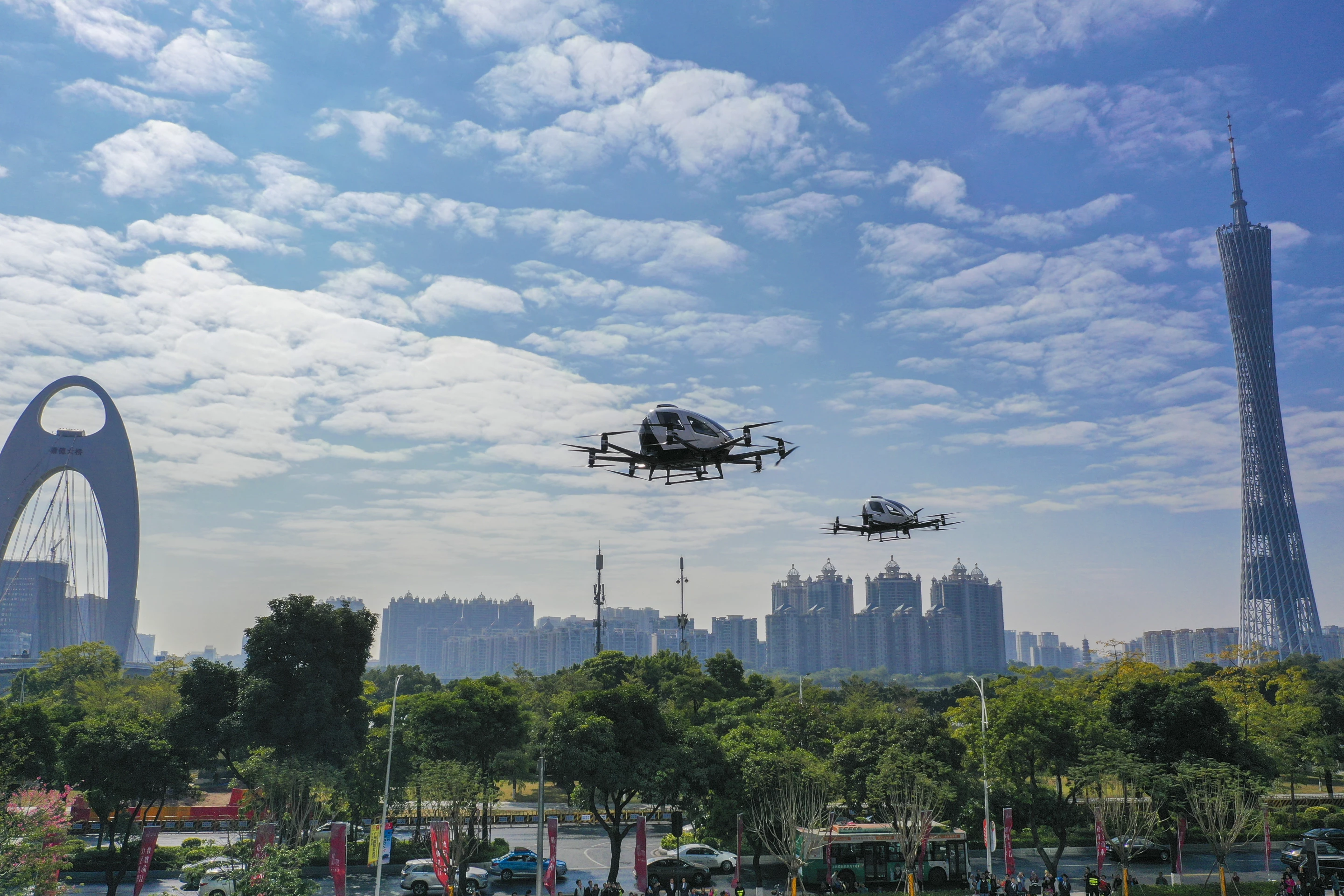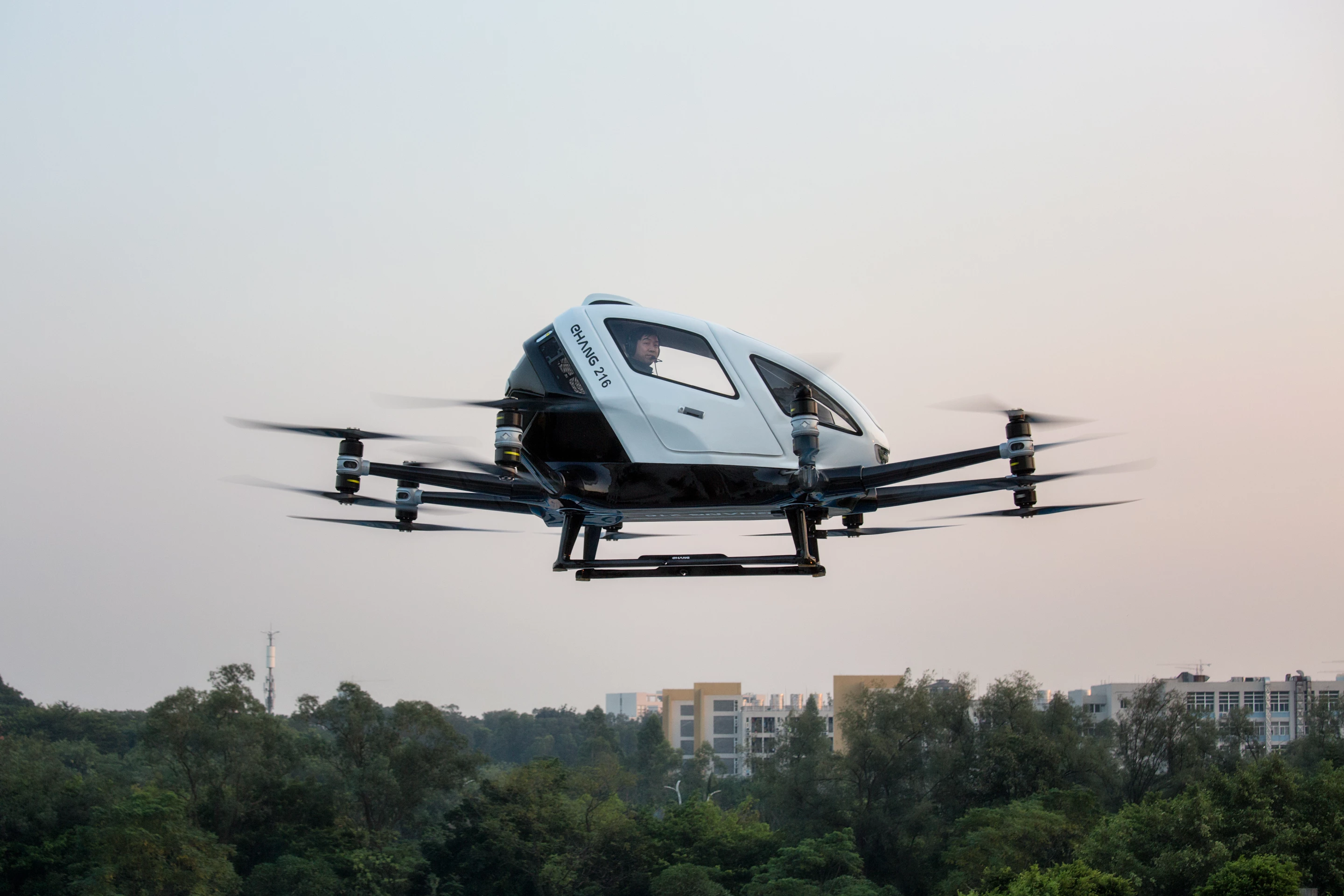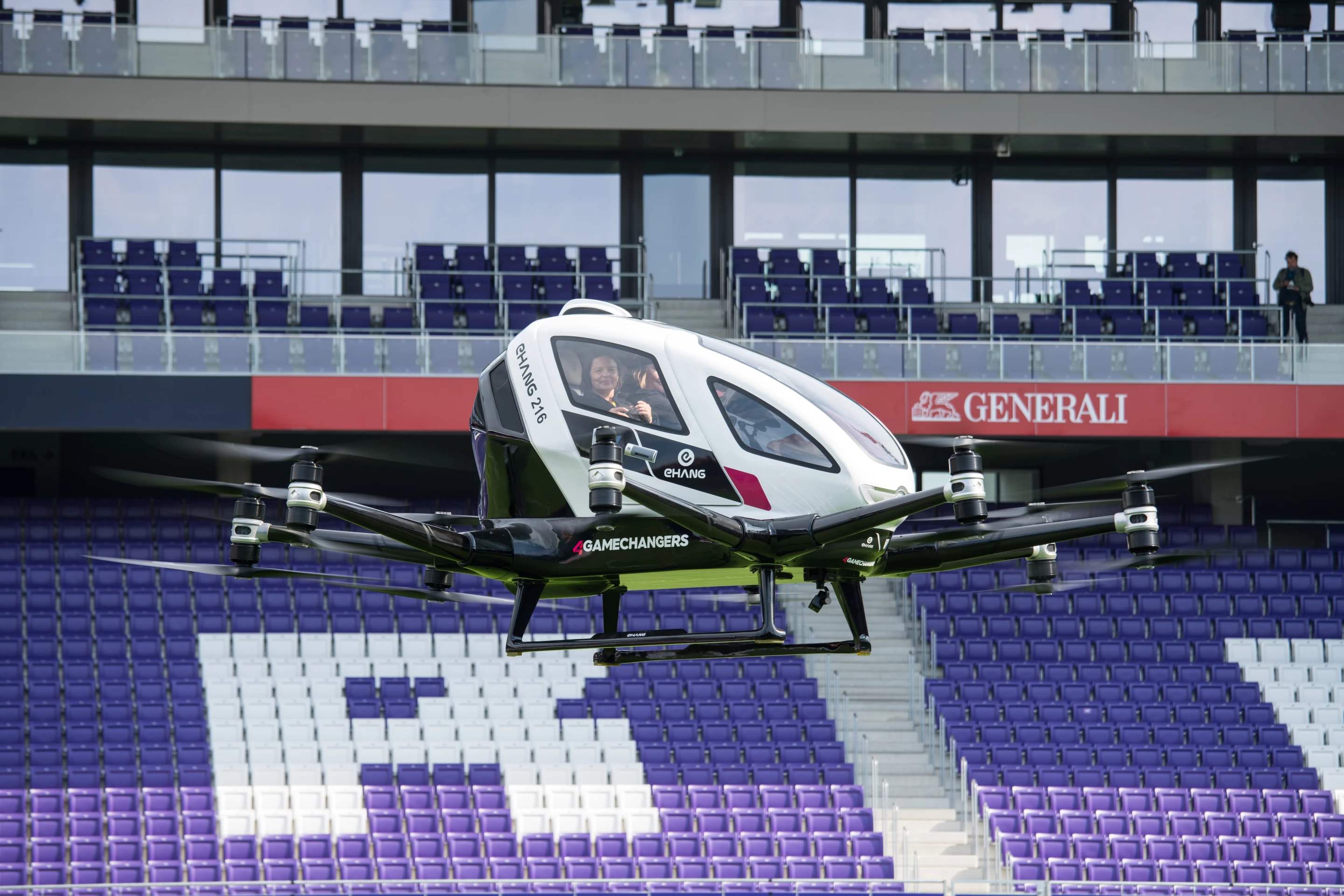Earlier this month, Ehang took to the air with its Autonomous Aerial Vehicle for the first flight in the US. It wasn't the single-seater 184 model revealed at CES 2016, but a two-passenger version called the 216. Specs on the new autonomous air taxi were scant at the time, but let's take a closer look now.
Ehang reports that it has conducted more than 2,000 passenger-grade flight tests of its Autonomous Aerial Vehicles in the few years that the company has been operating, including in winds of 70 km/h (43 mph) and in fog, with visibility around 50 m (165 ft).
The 184 was subsequently retired in favor of the upgraded and enhanced 116. Both the new single-seater 116 and the two-passenger 216 have 16 independent rotors spread across eight arms that surround the bottom of the passenger cabin. Both air taxis are capable of a top speed of 130 km/h (80 mph), and will cruise at around 100 km/h.
Fully laden (it can carry a total payload of 220 kg/485 lb), the 216's batteries will provide up to 21 minutes in the air, which is a couple of minutes longer than the 116. It's been designed to fly up to 3,000 meters (around 9,840 ft) above sea level.
The pilotless air taxi is equipped with a large panoramic windshield and two gull-wing doors. Ehang says that the interior has been designed for simplicity, comfort and convenience. Passengers select their destination from available options displayed on the 12-inch control panel to the front.

The AAVs have proprietary in-flight operating systems installed. The autopilot and flight control system, for example, gathers data from accelerometers, gyroscopes, a magnetic compass, barometers, visual sensors, GNSS receivers, millimeter wave radars and more, using this information to make "intelligent navigation decisions" courtesy of advanced algorithms. Other systems include communications, battery management, and safety management – with support coming from a command center on the ground.
Designed flight distance is reported to be 35 km (21.7 mi), which should be enough for a few short hops across the city before the batteries need recharging for 120 minutes.
Ehang has also developed non-passenger AAVs for smart city management (such as environmental monitoring and traffic control), logistics (as an alternative to ground-based hauling) and media applications (perhaps flying in formation as a choreographed show piece).
The US flight test at the beginning of January was an unmanned technology demonstration flight, and there were no passengers aboard. Ehang is now seeking FAA approval for flights carrying passengers in the near future.
Meanwhile, Ehang has already delivered nearly 40 air taxis to customers for testing, training and demonstration purposes, and has nearly 50 orders to fill. The company is currently shooting for regulatory approval for commercial operations in China, while helping a customer to obtain similar approvals in Europe.
Source: Ehang






